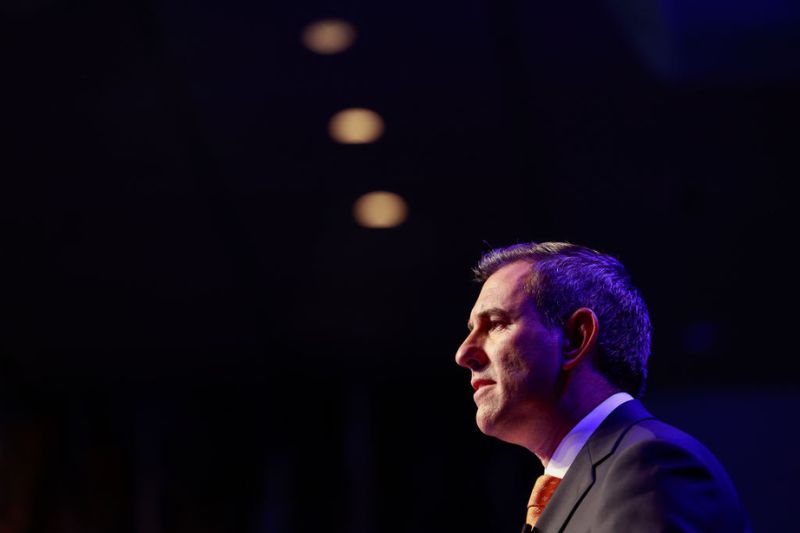The Federal Budget has been tabled and it is predictably designed to achieve maximum electoral appeal. There is a little bit for most voters but it is largely silent on the massive changes taking place in the international environment. One wonders how relevant it will end up being in the emerging geoeconomics and finance environment.

The most prominent element is cuts in the tax rate for the next financial year, from 16 per cent to 15 per cent for the lowest income threshold ($18,201 to $45,000). In the following financial year it falls to 14 per cent. It makes for a good headline, but it is only incremental and some of the gains will be undermined by bracket creep.
There are other titbits: a $1.8 billion increase in public hospital spending, increased funding for public schools, upgrades to the National Broadband Network and yet more funding for ‘closing the gap’ initiatives – one wonders, with all that money having been spent in the past, why so little progress has been made. There is an increase in the Medicare levy income threshold, provision for more bulk billing, energy bill relief and a 20 per cent reduction in student debt.
It is all fine for generating broad appeal across the electorate. But other initiatives reveal how ill prepared Australia’s political class is to make the changes needed.
Consider defence spending. There is a $1 billion boost to be added to the $9.6 billion in funding already planned to be spent over the next four years, but given the Trump government’s insistence on tying US military involvement to its allies’ own defence budgets, this seems insufficient. The budget projects overall defence funding to rise to 2.3 percent of GDP by the early 2030s. Will this be enough to ensure adequate self protection when relying on the US seems an increasingly dangerous strategy?
As the world shifts sharply away from globalisation and towards economic nationalism boosting local defence manufacturing seems an intelligent way to start reversing Australia’s spectacular deindustrialisation over the last four decades: as revealed by the Harvard Atlas of Economic Complexity which ranks Australia 102, below Bangladesh and Senegal.
There are the usual scraps thrown to younger generations who have been priced out of the property market: an $800 million boost to first-home buyer grants, which in the past have only made prices more unaffordable. There is funding for pre-fab and modular housing, which may lead to lower quality dwellings.
'What is needed is some serious reflection about how the extreme property bubble of the last two and a half decades divided Australian society and created extreme vulnerabilities – and what options there are to do something about it. But there is no sign of that in this budget.'
There is a small indication that the government is starting to realise that Trump’s tariff wars will require protection of what is left of local industry. One is a $2.4 billion bailout for the Whyalla steelworks. Another, more indirect initiative, is providing Australian smelters with a tax production credit for every tonne of clean aluminium they make over 10 years.
But there is no attempt to protect Australia’s oldest industry, agriculture, which is increasingly subject to dumping. Contrary to claims from Canberra and agriculture bodies, about four fifths of agricultural output serves the domestic market. Of the 53 rural sectors, as measured at the farm gate, only seven export more than half the value of their production, while five export more than a quarter to half of their product. The remaining 41 sectors concentrate on the domestic market and they are being damaged by cheap overseas product. There is nothing in the budget about that.
The biggest failure is the insouciance about Australia’s debt problems. Not so much government debt, which is actually modest at about 35 per cent of GDP. The elephant in the room is the ridiculous level of household debt, which, at over 116 per cent of GDP, is the third worst in the OECD. Australian households owe approximately 1.9 times their gross disposable income.
The tax cuts, and widespread cost-of-living relief for taxpayers and households, is a small attempt to take the edge off the pressures for those with big mortgages. But as the United States, Britain and Europe all head towards a debt reckoning that could easily trigger a financial crisis, it will be nowhere near enough to protect local mortgagees. Should there be a serious failure in Western debt markets, interest rates will soar, including in Australia.
What is needed is some serious reflection about how the extreme property bubble of the last two and a half decades divided Australian society and created extreme vulnerabilities – and what options there are to do something about it. But there is no sign of that in this budget.
David James is the managing editor of personalsuperinvestor.com.au. He has a PhD in English literature and is author of the musical comedy The Bard Bites Back, which is about Shakespeare's ghost.
Main image: Australia Treasurer Jim Chalmers talks to the media at Parliament House on March 26, 2025 in Canberra, AustraliaTreasurer Jim Chalmers delivered the 2025-26 Australian Federal Budget on March 25, 2025, focusing on cost-of-living relief and economic growth. The budget includes two new tax cuts, energy bill rebates, cheaper medicines, and increased funding for Medicare and childcare. Despite returning to a deficit after two years of surplus, Chalmers claims the economy is “turning a corner,” with plans for a “new generation of prosperity” in an uncertain global economic climate. (Photo by Hilary Wardhaugh/Getty Images)